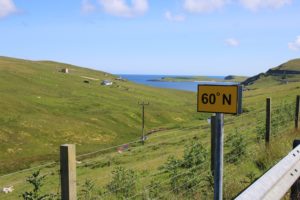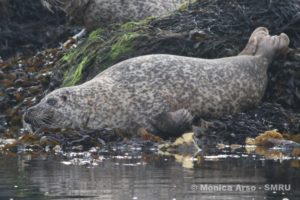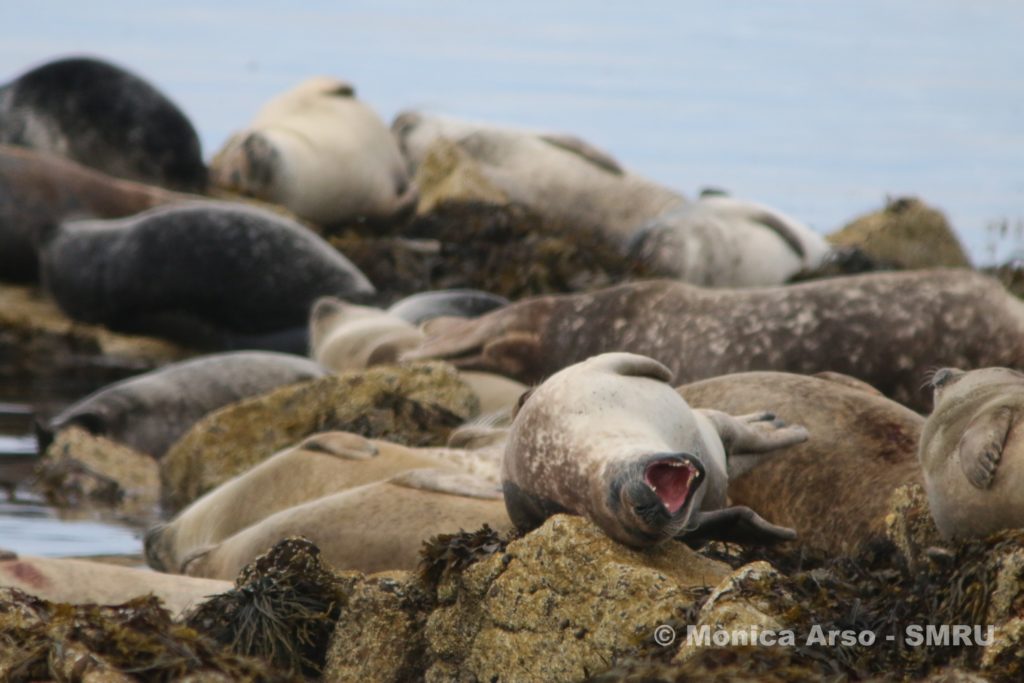Harbour seals’ coat is mottled and each seal has a unique pattern of spots in their pelage which can be used to identify them individually. This technique is known as photo-identification, and it is of great use to study wild populations of animals that are naturally marked (e.g. whales, seals, giraffes, tigers, salamanders, turtles, whale sharks and manta rays among many others). By photographing animals repeatedly over time and identifying them based on their unique natural marks we can start building up individual sighting histories. These can then be used to infer different individual and population parameters, such as the number of animals using an area, their survival and birth rates, or patterns of residency or movement between different haulouts.
When we visit a haulout, we take photographs of individual seals from a distance to avoid disturbing them, using a camera attached to a scope. At the end of the day, we download the photographs and we grade them according to their photographic quality. Then the “Guess who” game starts, to identify individual seals based on the spot pattern, mainly from the head and neck areas. This allows us to identify seals that have been previously photographed as well as adding newly seen individuals to the catalogue.

In harbour seals, newborn pups are already born in their first adult coat. This is a much darker pelage compared to the adults, but their spot pattern can already be seen. The colour coat changes through the year, from a pale sandy-brown shortly before they moult to a fairly dark charcoal-grey just after moulting. Yearlings (one-year-old seals) begin to moult first, followed by adult females and finally adult males, although there is considerable overlap between all groups.






